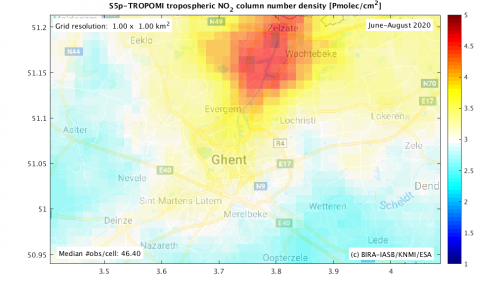Synergistic use of space and surface observations for assessing the effects of environmental policies on air quality
Governmental air quality (AQ) monitoring and reporting in Europe has hitherto been relying mostly on in-situ measurements of near-surface concentrations, with geographical gaps between observations filled in with numerical models using (proxies for) emission estimates.
Nowadays, a new constellation of satellite sounders on both sun-synchronous Low Earth Orbits (LEO) and geostationary orbits (GEO) offer complementary perspectives on AQ, typically at the 5-km scale: LEO sounders like the Copernicus Sentinel-5(p) series perform daily global mapping of atmospheric composition, while GEO sounders like GEMS and the upcoming Sentinel-4 series observe the diurnal cycle of AQ over the geographical area accessible from their geostationary viewpoint.
To facilitate the uptake of this new-generation satellite AQ data by institutional policy makers and other stakeholders, the Belgian federal research project LEGO-BEL-AQ develops a prototype information service for satellite-based AQ monitoring over Belgium.
Key challenges to realize the full potential of the AQ satellite constellation
The project addresses scientific challenges peculiar to the targeted application:
- downscaling the satellite data to the scale of Low Emission Zones (LEZ) and emission hot spots,
- connecting the column amount of pollutants measured by a satellite with the near-surface concentrations actually leading to adverse health impacts, and
- integrating observations from multiple LEO and GEO platforms into a synergistic AQ monitoring system.
Pilot service: NO2 monitoring tailored for Belgian municipalities
As a first use case, the figure shows that appropriate combination of temporal aggregation, data filtering and geographical oversampling of Sentinel-5p data can produce NO2 maps at (almost) 1-km resolution, revealing now policy-relevant features in the NO2 distribution at suburban scales.
Comparisons of the improved-resolution NO2 maps with ground-based near-surface observations procured by the regional authorities conclude to a high correlation at seasonal and annual time scales, allowing pragmatic conversion of the satellite column data into near-surface concentrations. The latter can then be confronted to maximum exposure thresholds recommended by public health organizations, as illustrated in the NO2 map for Belgian municipalities.

